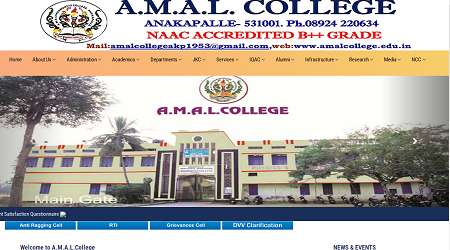how to write an outline for a research essay
how do you write a thesis outline how to create a detailed outline how to write a thesis statement and outline how to write an outline for a research essay master's thesis chapter outline master's thesis outline example how to write an outline and thesis statement how to write a detailed outline how to write the outline of a research paper how to write an outline for a thesis how to write a chapter outline for dissertationA thesis or dissertation is likely to be the most lengthy piece of writing you’ll ever write. Writing a thesis is a challenging task for many students. However, with a little planning, it’s simple to break it down into smaller, more manageable jobs.
THREE_BUTTON
A little planning, like with all academic writing, will help you make the most of your time and ensure you don’t neglect anything vital during the dissertation writing process.
When most students begin their studies, they have little knowledge of how to write a dissertation or how to write a decent thesis, but they quickly develop these skills. This portion of the website can assist you in doing so even more quickly.
Not all of the writing for your thesis will be completed at the end of your studies. Some sections, such as the initial literature review and dissertation proposal, will be required to be written when you initially begin.
Organization of a Thesis
A thesis is usually divided into multiple chapters. It’s a good idea to plan the dissertation outline before you start writing your thesis so you know what you want to say in each section. In general, there are two methods to organize the information in your thesis.
The first method is to use a structure that is comparable to the IMAD format for producing a lab report or scientific paper, although it is longer. You’d find the following:
- An Introduction Chapter
- A Literature Review
- A Materials and Methods Chapter
- A Results Chapter
- A discussion Chapter
- A Conclusions Chapter – When a thesis is extensive and thorough enough, a separate, short conclusion chapter frequently pulls the material together nicely at the end.
Furthermore, you would also have:
Before the Introduction:
- A title page – The title of the work, your name, the faculty and/or department where you study, and the name of your university are normally included.
- An abstract
- A list of contents
- A list of figures
- A list of tables
Subsequent to the Conclusion:
- The acknowledgements
- The reference list
- Appendixes (optional only if required)

Writing a Thesis
Because a thesis is such a lengthy document, the only way to write it successfully is to prepare, rewrite, then plan again. You should begin planning before you begin your experiments. All of your experiments should be part of a larger story that leads to a conclusion. As a result, they must be well-planned and linked. This will undoubtedly aid you in the completion of your thesis.
As with any academic writing, you should follow the guidelines outlined in the section on the academic writing process. It’s even more crucial to conduct extensive research while conducting your own experimental investigation.
You must do this for two reasons: one, you must have a thorough understanding of the topic area in order to plan your experiments, and second, you must produce a literature review.
Literature Review
The literature review is the first element of the thesis writing process, and it will comprise a summary of all the information that is important to your topic.
Throughout the time you are conducting your experiments, this should be kept up to date. It’s usually written initially and then updated as you work so that it’s still current when you submit your thesis.
This should be the final section to be changed before submitting, so you can include a reference to any relevant paper, even if it was only published a few days before you submit.
Introduction
The introduction should describe why your research topic is essential, what you want to accomplish by conducting it, and a summary of the primary studies on the subject (not as detailed as the literature review).
You should include a section at the end of the introduction with the particular goals of your experiments.
When writing the introduction and literature reviews, treat them as essays and utilize comparable techniques to get them to a nearly finished state before moving on to the next step in the thesis writing process.
Materials and Methods
You’ll need to make careful notes of everything you performed for the materials and methods portion so you can write it up completely. You can write this section while doing the experimental work if you have time.
After that, all you have to do is change it so that the results are in the same order as the ones you show in the results section.
Results
After you’ve completed the experiments, the results section will usually take the most time to write, as long as you’ve been organized and have nearly finished the introduction, literature review, and procedures.
You’ll need to analyze your findings (remember to explain what you did in the methods part), present them in an appropriate format, such as tables or figures, and then describe them in the results section’s text. Remember, there will be no debate here; just the facts.
Discussion
As you were writing the findings part, you should have been making notes about how you wanted to interpret the data and what they meant, so the discussion should be quite simple to write.
You should have a plan for what you want to say and only need to write it down. Remember to talk about your findings in terms of the literature. You must back up your claims with evidence from the literature.
THREE_BUTTON
Conclusions
The conclusion section should summarize the important points from the discussion and leave the reader with your research’s main takeaway message.
Do not go through the results in this area; instead, connect all of the pieces of the study and show how you met the objectives you laid forth in the objectives section.
Latest News & Updates
- G H Raisoni University Phd in Interdisciplinary Subjects Admission 2024-25, Fees and Research Assistance
- G H Raisoni University Phd in Cinematography Admission 2024-25, Eligibility, Fees and Guidelines
- G H Raisoni University Phd in Direction Admission 2024-25, Fees and Research Assistance
- G H Raisoni University Phd in Film and Television Admission 2024-25, Eligibility, Fees and Guidelines
- G H Raisoni University Phd in Film Making Admission 2024-25, Fees and Research Assistance
- G H Raisoni University Phd in Journalism Admission 2024-25, Fees and Research Assistance
- G H Raisoni University Phd in Mass Communication Admission 2024-25, Eligibility, Fees and Guidelines
- G H Raisoni University Phd in Media Arts Admission 2024-25, Fees and Research Assistance
- G H Raisoni University Phd in Folk Arts Admission 2024-25, Eligibility, Fees and Guidelines
- G H Raisoni University Phd in Graphic Design Admission 2024-25, Fees and Research Assistance
Top Courses
- BACHELOR OF SCIENCE IN APPLIED CHEMISTRY
- BACHELOR OF ARTS IN MEDIA TECHNOLOGIES
- BACHELOR OF ARTS HONOURS IN PHILOSOPHY
- BACHELOR OF ARTS HONOURS IN BUSINESS ECONOMICS
- BACHELOR OF ARTS IN ENGLISH WITH JOURNALISM
- BACHELOR OF ARTS HONOURS IN PSYCHOLOGY
- BACHELOR OF ARTS HONOURS IN HINDI
- BACHELOR OF BUSINESS ADMINISTRATION IN AVIATION
- BACHELOR OF COMMERCE
- BACHELOR OF ARTS HONOURS IN FINE ARTS




















